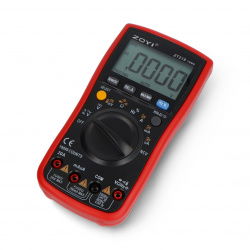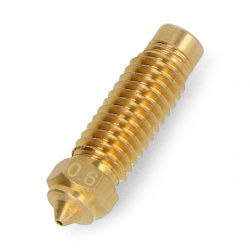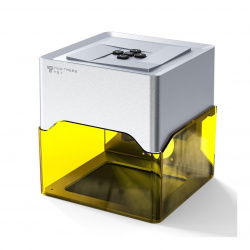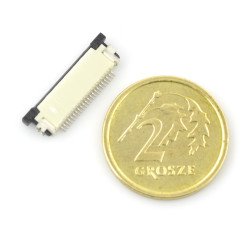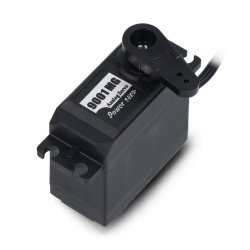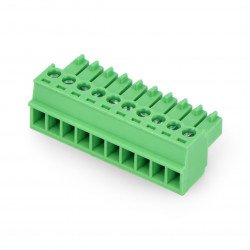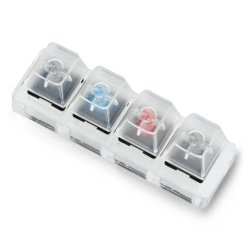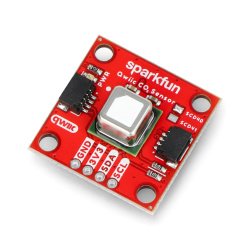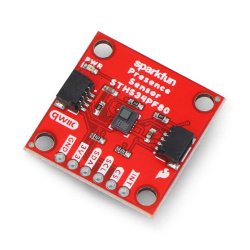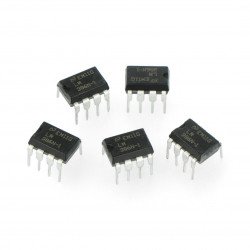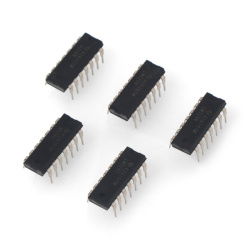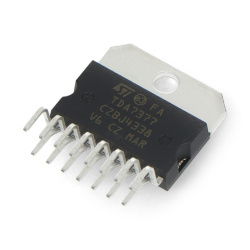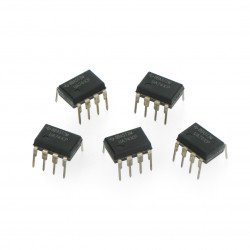The popularity of an operational amplifier as a structural element in analog circuits is due to the versatility of this device. The operational amplifiers work in such a way that they use negative feedback. As a result of changing the characteristics of the op amp's feedback loop circuit, its parameters such as gain, input and output impedance, bandwidth can be changed. These parameters are determined by external components and depend only slightly on temperature coefficients or design tolerances in the op-amp itself. Due to this fact, these elements are very versatile and are willingly used by many designers of electronic, robotic and automatic systems. Op-amps come in handy when you're working on intermediate to advanced DIY electronic projects and more.
Operational amplifiers
Operational amplifier NE5532 - 5pcs
Dual operational amplifier in DIP case. Items are sold in sets of 5 pieces.LM324N operational amplifier - 5pcs.
The LM324N is an integrated circuit containing four high-gain operational amplifiers with internal frequency compensation and a wide supply voltage range. Its bandwidth is 1...TDA7388 audio amplifier - ZIP-25
The TDA7388 amplifier is a four-channel class AB audio circuit used in car radios. It offers 4 x 45 W at 4 Ω, is powered by a voltage to 18 V and is characterized by low...TDA7377 audio amplifier - ZIP-15P
The TDA7377 is a Class AB power amplifier used in car audio systems that can operate in bridge mode at 2 x 30 W or in four-channel mode at 4 x 6 W. It operates in a...LM741C (UA741C) - Operational Amplifier - 5pcs
Single operational amplifier in DIP case. Set of 5 pcs.Operational amplifier LM358P/N - 5 pcs.
A single operational amplifier in a through-hole housing. Supply voltage is 3 V to 32 V .See also
Operational amplifier – a universal block for building analog circuits
The use of operational amplifiers as circuit blocks greatly simplifies their design, regardless of whether the amplifiers used are integrated circuits or are composed of discrete elements. Because the operational amplifier can be approximated as if it were an ideal differential amplifier, system design is simple. The gain of the operational amplifier depends on the specific model, so before making your choice, please read the technical description. Other important issues are the output voltage of the operational amplifier (at the amplifier output), frequency response, housing and class. It is also worth reading the information describing the input voltages and differential voltage (i.e. the difference in input voltages).
What else distinguishes operational amplifiers?
It is only at a later stage of the project that the permissible range of parameters for each operational amplifier is selected. This type of approach allows not only to simplify the device design process, but also to simplify its modeling at the prototype creation stage.
Principle of operation of op-amps
To put it simply, an operational amplifier is a voltage amplifier with a DC-coupled differential input. There are two types of signals at the amplifier inputs - positive, non-inverting voltage and negative, inverting voltage.
The output voltage is, in turn, asymmetric and equal to the difference between the non-inverting and inverting inputs, amplified A times (where A is the gain of the element in the open feedback loop). This parameter is high for most operational amplifiers and is often 100000 or more. These systems can also operate in a closed loop (i.e. negative feedback). By introducing appropriate elements into the loop circuit, you can obtain systems with lower gain, non-linear elements, etc.
Typical operational circuits of operational amplifiers
An operational amplifier with a closed feedback loop can basically operate in two configurations - a non-inverting amplifier (with the signal fed to the non-inverting input - plus) and an inverting amplifier (with the signal fed to the inverting input - minus).
The gain of such a system depends on the elements of the feedback loop. In the first case it is positive and in the second it is negative, which causes the signal phase to shift by 180 degrees - i.e. its inversion. If there are elements such as capacitors or coils in the feedback loop, it is possible to modify the frequency characteristics of the loop and, consequently, of the entire amplifier.
This allows the construction of active filters using operational amplifiers. Additionally, there are specialized op-amp circuits, such as derivative and integral circuits, adders and others.
Operational amplifiers - FAQ
An operational amplifier allows you to perform various operations on an analog signal, such as phase shifting, voltage-current conversion, summing, and integration. You can learn morein the article on our blog.
Operational amplifiers are used in a variety of DC electronic devices, especially those intended for analog signal transmission and processing – for example in function generators , audio and video equipment, and measuring devices .
The most important parameters of an operational amplifier include, among others, differential gain, input and output resistance and permissible supply voltage.
An amplifier is a circuit that increases the power of a signal using the energy provided by the connected power supply. Both analog and digital amplifiers are used.



































































































































































































































































































































